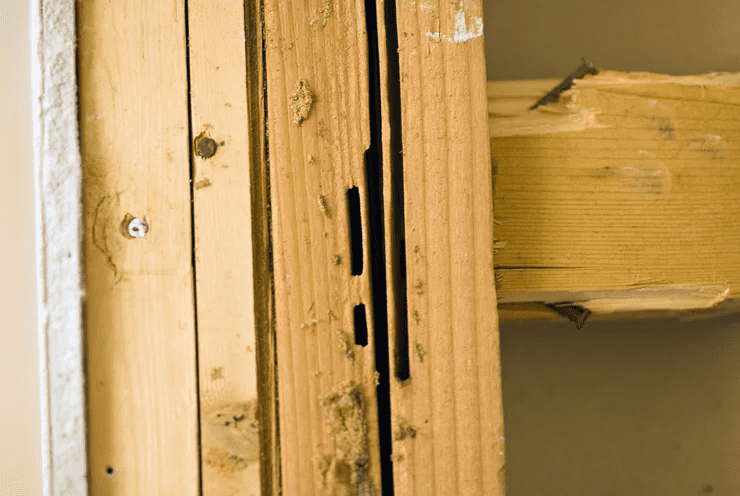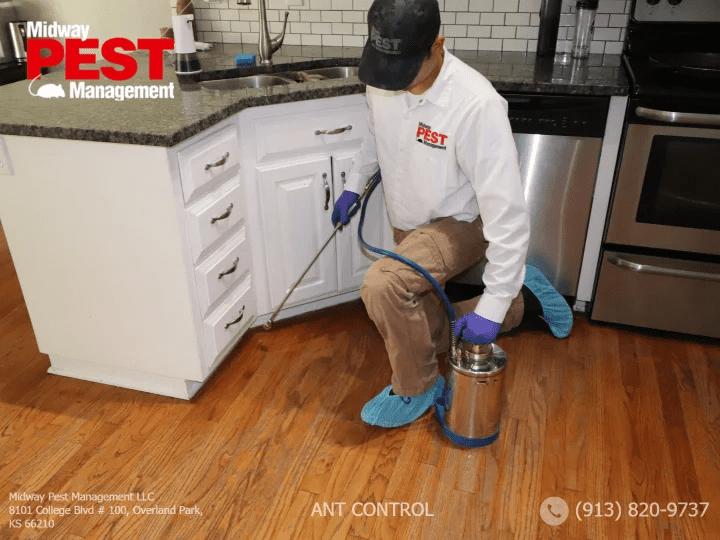
Carpenter ants are an invasive species that are known to wreak havoc in homes that they infest. These specific species of ants burrow through the wood in your home and can pose a great risk to the inhabitants of the house. Over time, the structural integrity of the wood degrades, which can spell danger for you.
So how do you rid your home of carpenter ants for good? There are different at-home methods that you can try to get rid of these pests like using borax, dish soap and boiling water. However, calling a professional pest control may be your best option to permanently exterminate all ants to make sure that your home and your loved ones that live in it are protected.
Some Ways to Exterminate Carpenter Ants
Carpenter ants are responsible for a lot of damage in homes when left unattended. Determining if you have a carpenter ant infestation as soon as possible is important in order to get rid of them before their nest and colony size grow out of hand.
Home Remedies
You may not realize it, but you might just have the household items in your kitchen cabinets that are fit for exterminating these invasive pests. Below are some of the ways you can get rid of carpenter ants at home.
Borax
More commonly used as a household cleaning agent, borax is actually an effective carpenter ant exterminator. Mix ½ borax and ½ water into a spray bottle in order to create your DIY insecticide.
Spray onto carpenter ants that you see in your home, as well as areas where you frequently see them. The powerful solution breaks down the ant’s exoskeleton and effectively kills them. Spraying them on surfaces also makes sure they don’t find their way onto them.
Dish Soap
For a milder solution that is easier on the surfaces of delicate items, dish soap may also be an effective carpenter ant killer. Mix ½ dish soap and ½ water into a spray bottle and spray directly onto carpenter ants and areas where they may be seen.
Boiling Water
Boiling water can also be a simple way to kill these invasive species of ants. The key here is to locate ant trails or nests outdoors and pour a pot of boiling water. The hot water will drown and scald the ants effectively killing them. This option is cheap and does not require any other item at all.
This method however is limited to only killing ants in sight. Carpenter ants who have large colonies and multiple nests may not be completely exterminated. In addition, you may run the risk of scalding yourself with this method.
Baking Soda
You can create a simple do-it-yourself carpenter ant bait and exterminator. Mix equal parts baking soda and sugar, and sprinkle this powdered mixture in areas where you may find carpenter ants.
The sugar will act as bait and lure the ants into consuming the mixture, to which they accidentally come into contact with baking soda. The baking soda is toxic to the carpenter ant’s body and will kill them. In addition, these ants may bring back this mixture to their nests effectively killing other ants they come into contact with.
Essential Oils
It’s reported that carpenter ants rely on pheromone trails to locate their food and trails. Essential oils such as peppermint and tea tree will work to ward them off. When these carpenter ants come into contact with these oils, they’re thrown off and effectively deter them from returning to the intended sites. You may soak a cotton ball with essential oil and swipe corners, countertops, window sills, and doorframes.
Professional Pest Control
If none of these home remedies seem to work, or if you just want an efficient and highly effective option for exterminating these pests without much work for yourself, consider approaching a professional pest control service provider.
These experts are able to locate and identify carpenter ants’ nests with their wealth of experience. They’re equipped with different commercial-grade solutions and chemicals to get the job done.
Signs of Carpenter Ants Infestation

Aside from seeing carpenter ants in different parts of your home, there are signs that can be identified as tell-tale signs of a carpenter ant infestation.
Nests
Locating, or coming across the carpenter ant colony’s nest is important to find the source. There are two kinds of carpenter ant nests: the main colony and satellite colonies. The main colonies contain all the worker ants and the queen, while satellite colonies have some workers and larvae.
It’s challenging to locate all possible nests as they can be widespread around your home. They can usually be found in decaying material, such as wood in cabinets, door frames or old cardboard boxes where moisture has built up.
Frass
If you see frass, which is almost like sawdust or wood shavings, this can indicate carpenter ants in the house. Carpenter ants dig into the wood and create frass along the way as they make their nests.
Wood Damage
Carpenter ants are known to build their nests in wood. As a result, they create slits or holes within the wood that can be observed with a closer look. Hollow sounding wood or creaking windows and doors may also indicate wood damage that comes from carpenter ant activity.
Differentiating Carpenter Ants and Termites
Some people mistake termites for carpenter ants because of their similarities. It is important to be able to differentiate the two and determine which pest you are dealing with in order to correctly remedy the infestation.
Carpenter ants are larger insects with three body segments, the head, thorax, and abdomen, and 6 legs. Worker ants don’t have wings while reproductive ants do. Their wings are usually shorter than their bodies. They walk in trails, following the scent of the ant in front of them.
Termites are smaller and lighter colored. They have only 2 body segments: the head and the thorax. They also have straight antennae and their wings can be longer than their bodies. Carpenter ants create smooth and neat-looking tunnels in wood. Termites create rough mud tunnels that have mud. Termites’ food source is the wood itself, while carpenter ants only use wood as their nesting locations.
If you’re unsure what kind of pest is infesting your homes, contacting an expert pest control service may be your best option. They can determine which infestation you may have and recommend the next step.
Risk and Dangers of Carpenter Ants
Carpenter ants can damage the structural integrity of your homes because of their nesting activity. Although it takes years for carpenter ants to create substantial damage, their activities often go unnoticed.
They can grow in number fast and before you know it, you have an infestation at your hands. Aside from the structural integrity of your home, they can also damage furniture such as wooden tables, chairs, and cabinets that may break over time. In addition, carpenter ants may also bite humans if they are, or their nest is threatened.
Preventing Carpenter Ants Infestations
These invasive species of ants need a water source to survive. Eliminating moisture from standing water, leaky faucets, and other sources can help prevent moisture from seeping into areas where they can nest. You should also trim tree branches and plants, and make sure to clean them up from your wall as they can be food sources for these ants.
In addition, make it a habit to regularly clean your homes of any debris or clutter in attics, crawl spaces, or small rooms as carpenter ants may find rotting softwood or debris for them to thrive.
Regularly inspect the wooden areas of your homes for any signs of damage in order to detect these pests early on.
Midway Pest Management: Offering Expert Pest Exterminating Services

Carpenter ants can be invasive and destructive to your homes. They burrow into wood and damage them in the process. Fortunately, there are home remedies you can use in order to kill these pests. Maintaining a clean and moisture-free house also deters them. For more effective and efficient pest control, it may be worth your money and time to approach a professional pest exterminator.
Midway Pest Management is your go-to pest exterminating service provider. We can handle a wide range of problems you may have, from carpenter ants to termites, bats, and other pests. Our team of experts can assess your situation and recommend solutions and treatments for your pest management needs. You may reach us here.
Learn More: How to Identify a Carpenter Ant